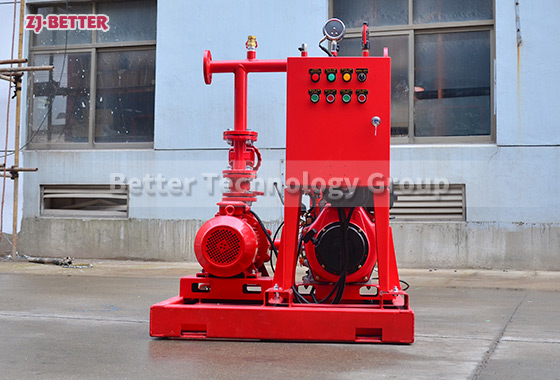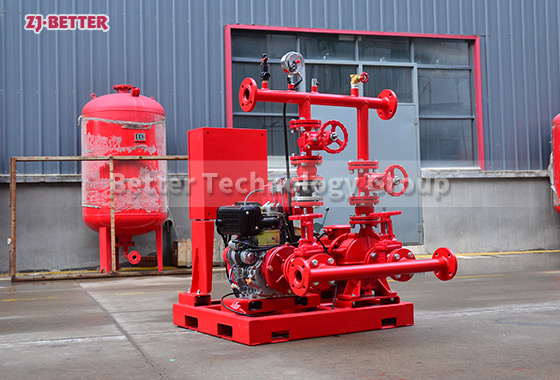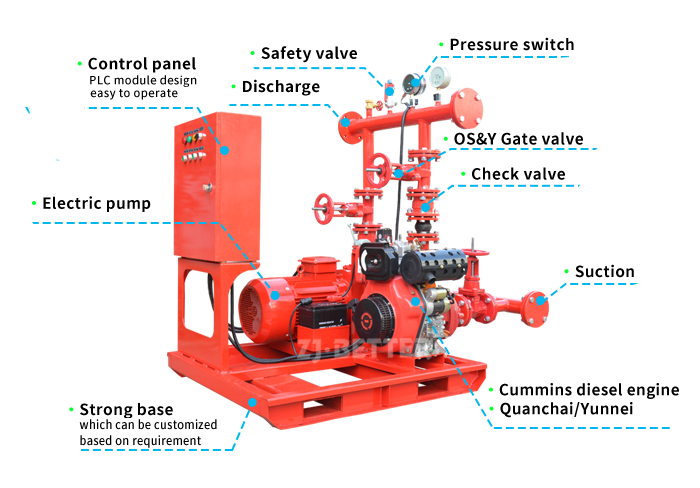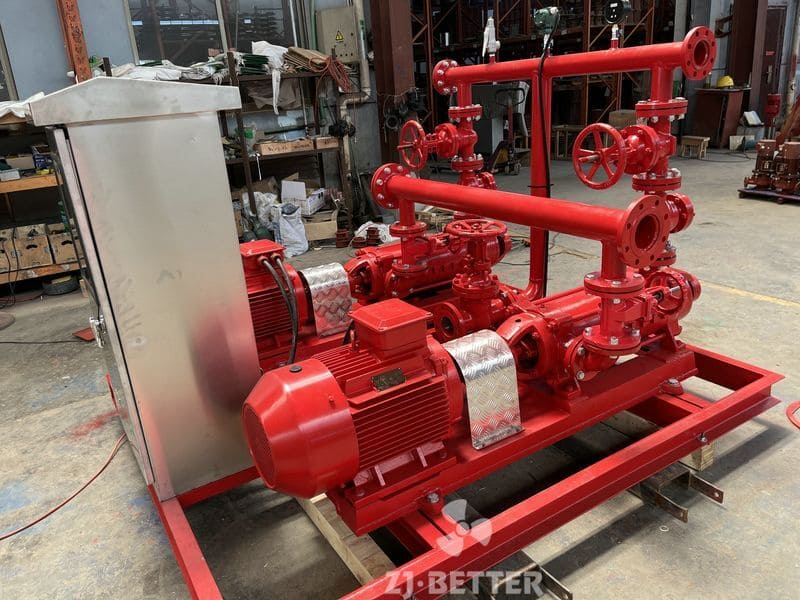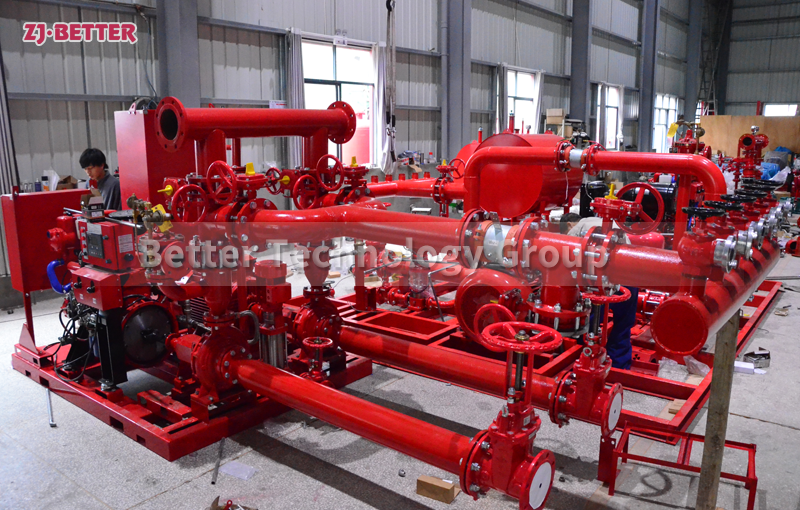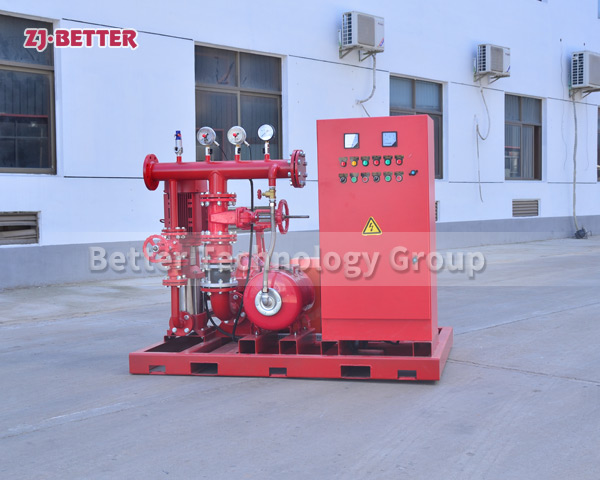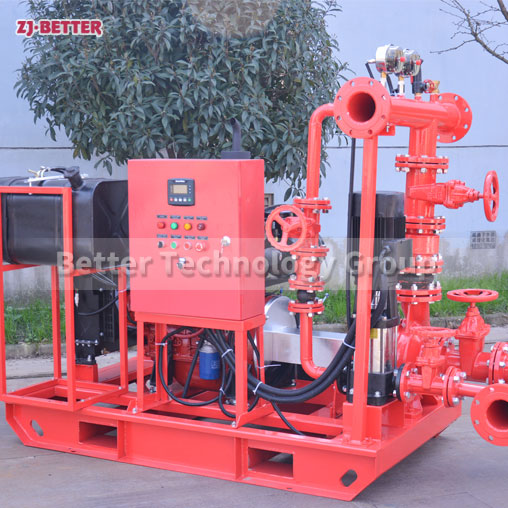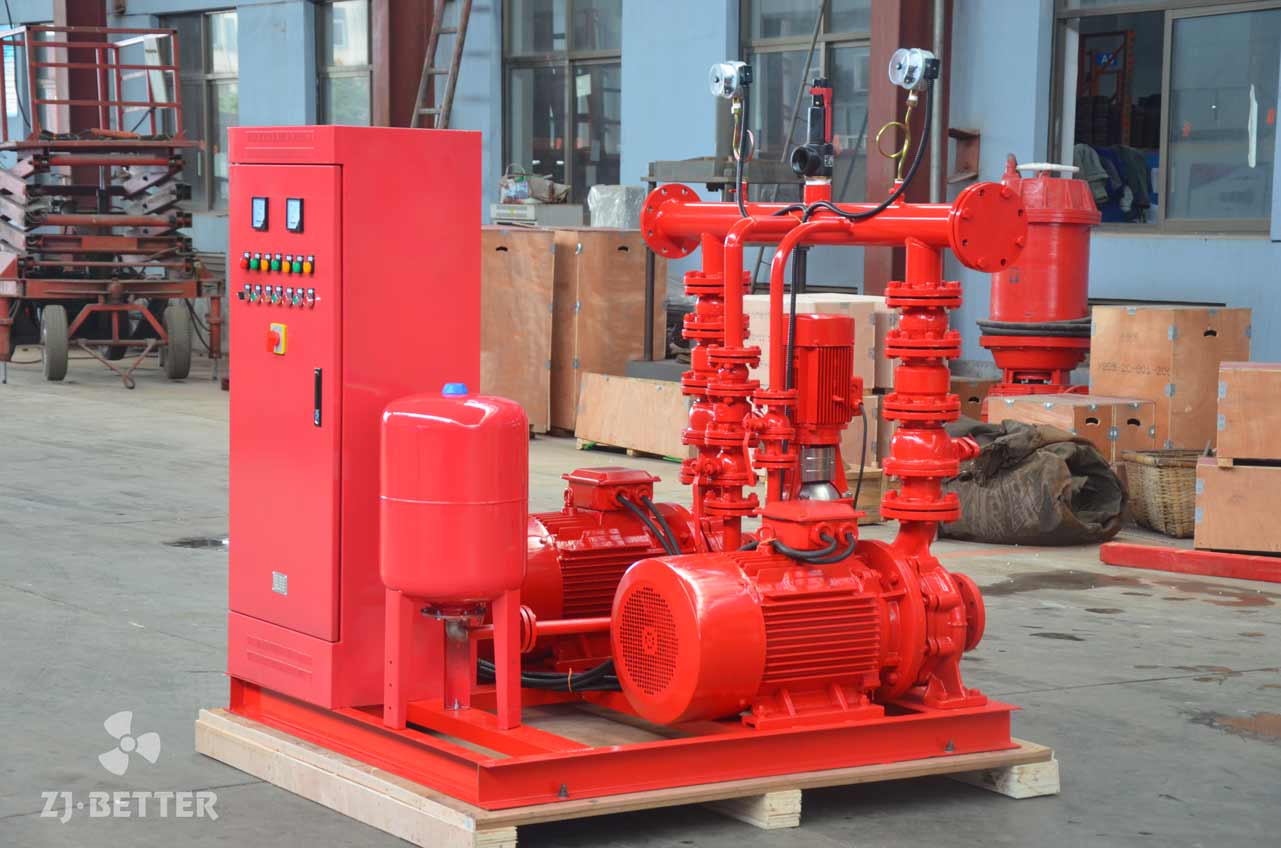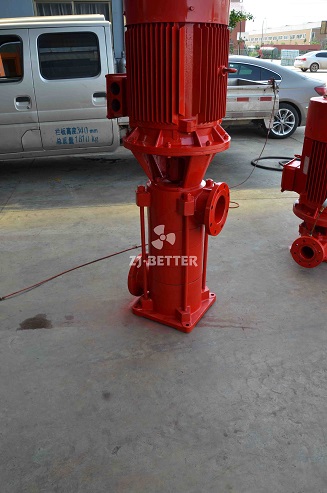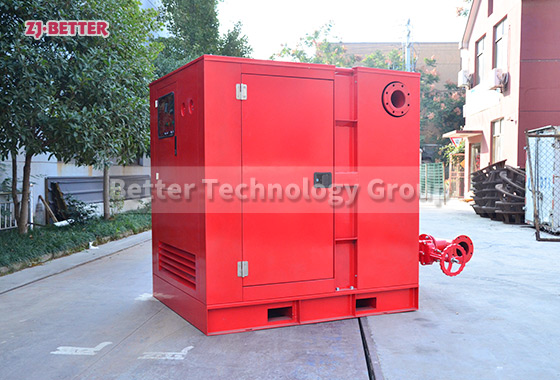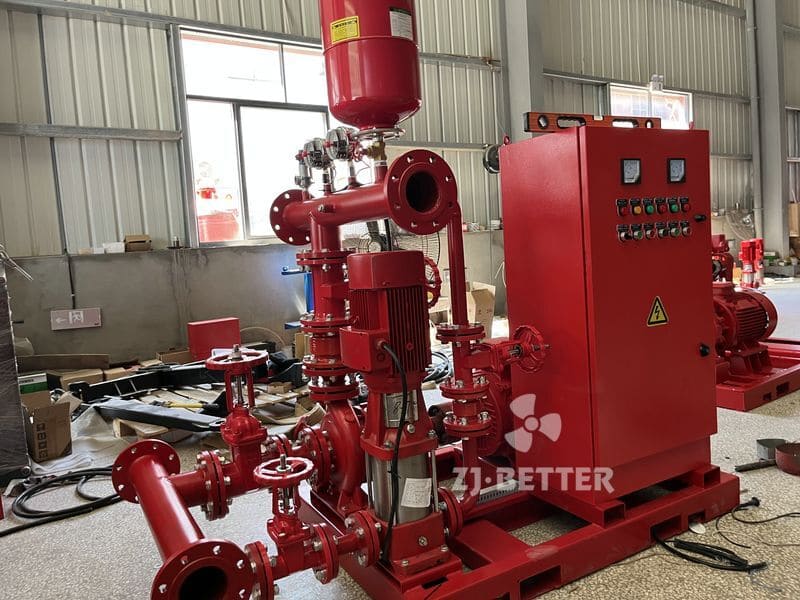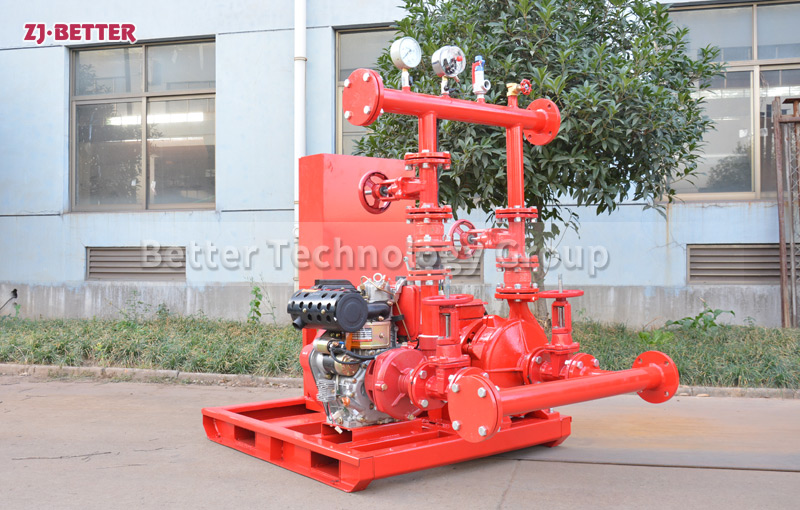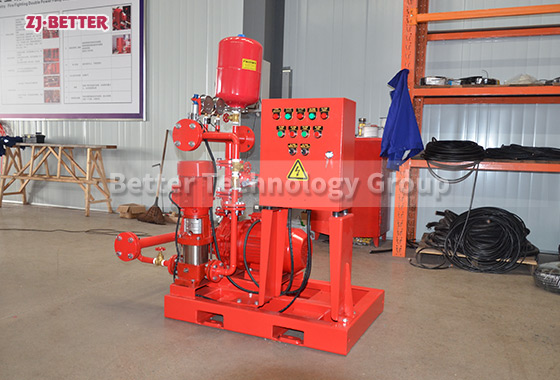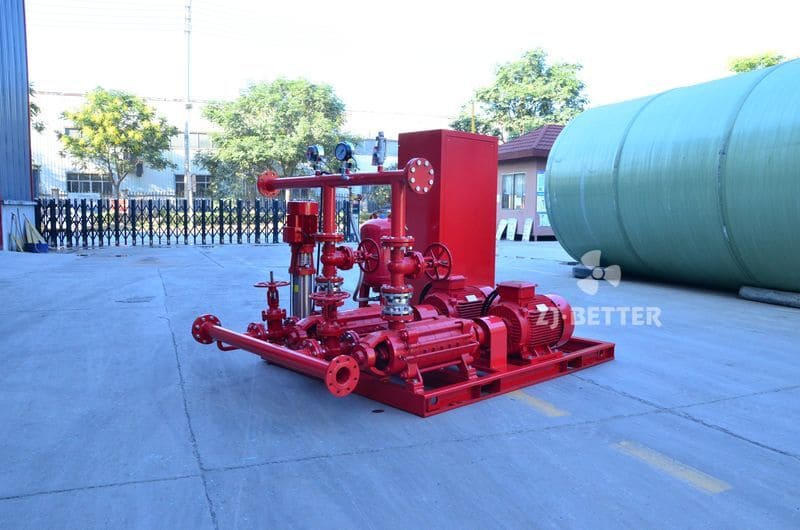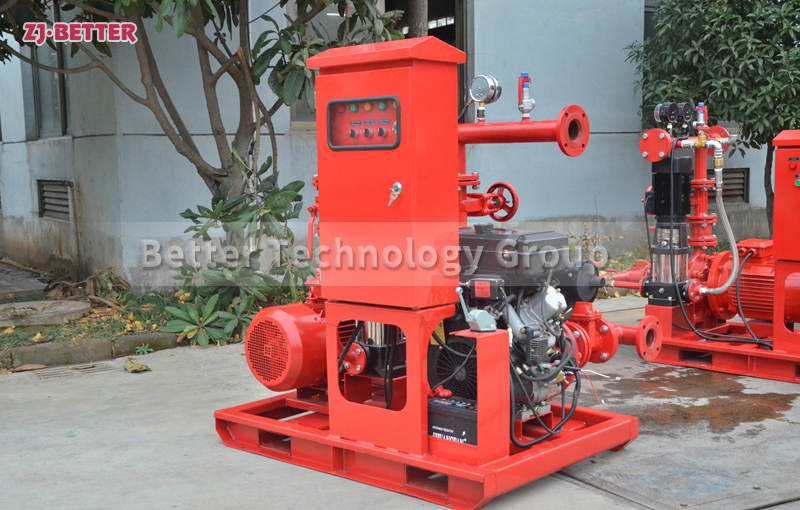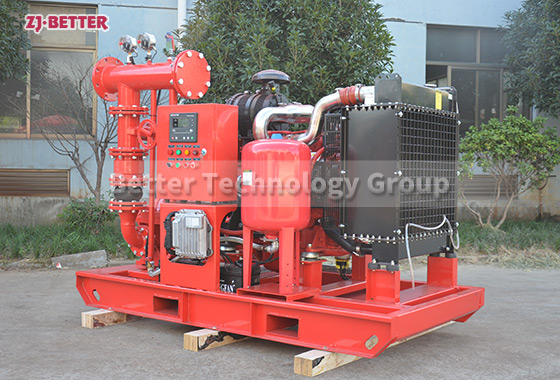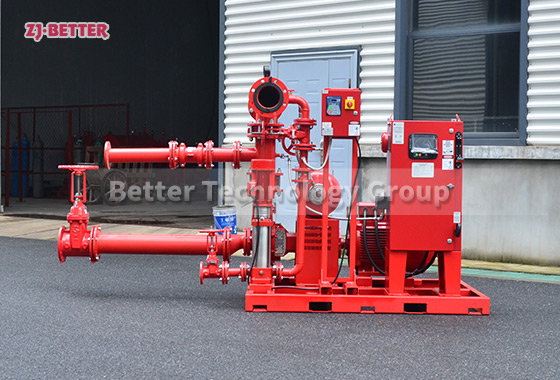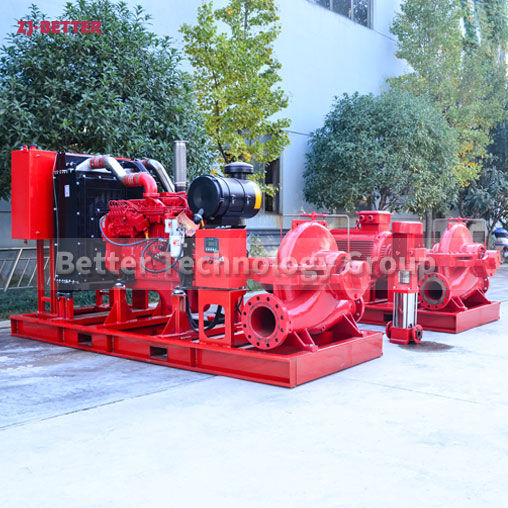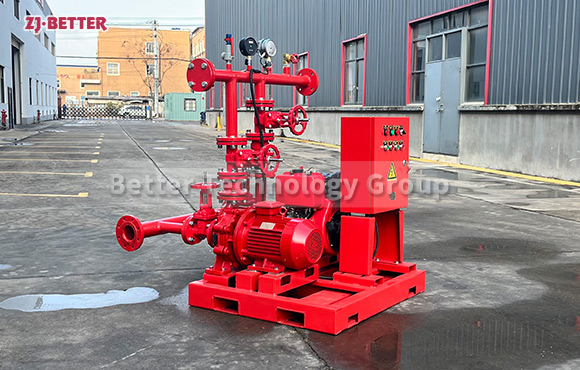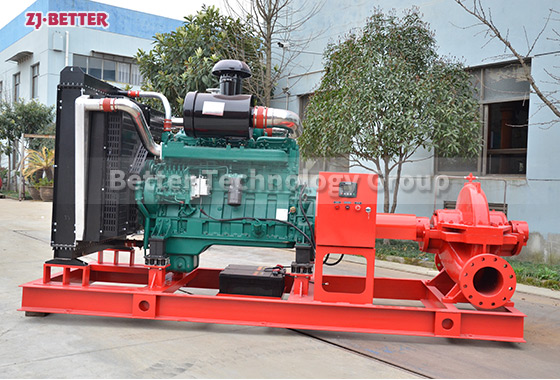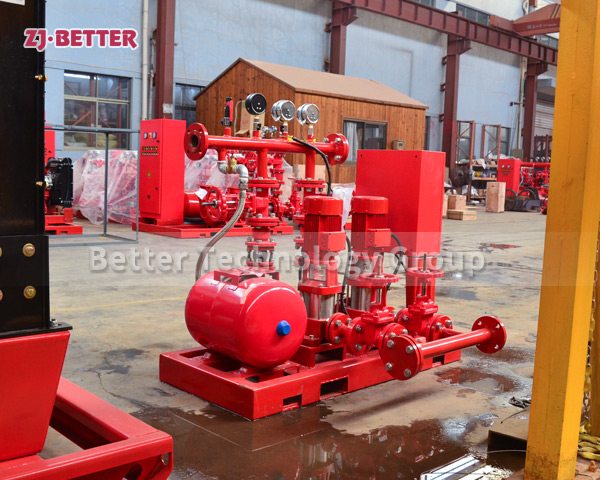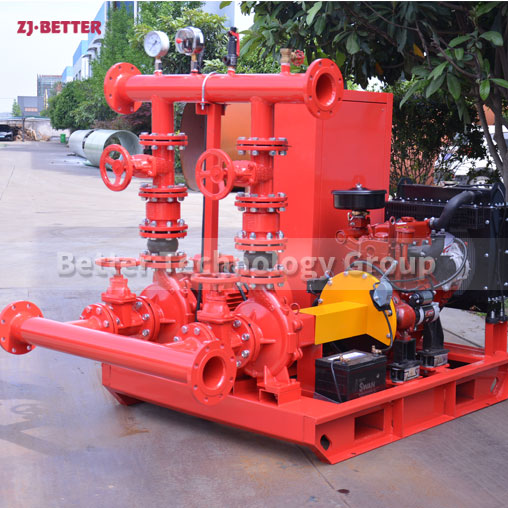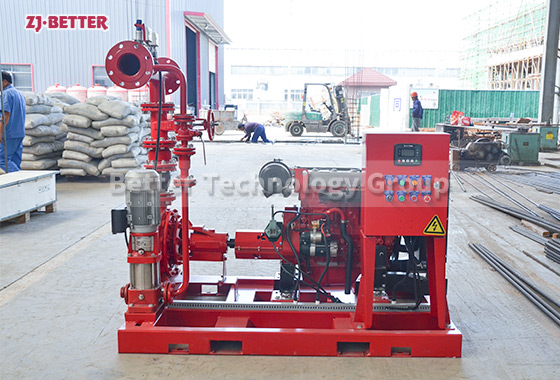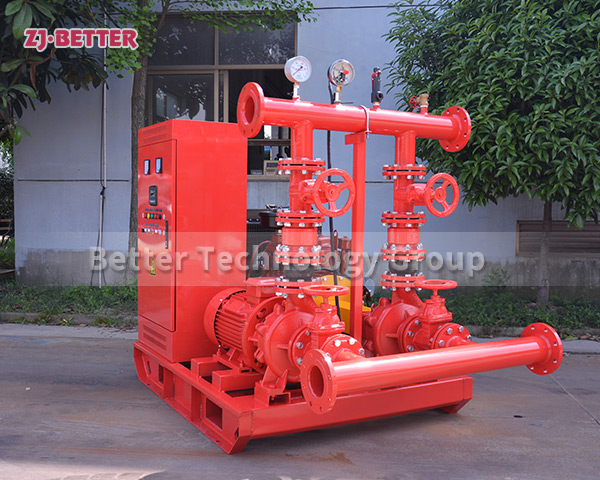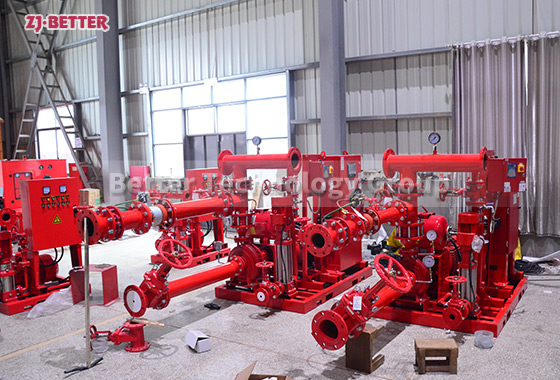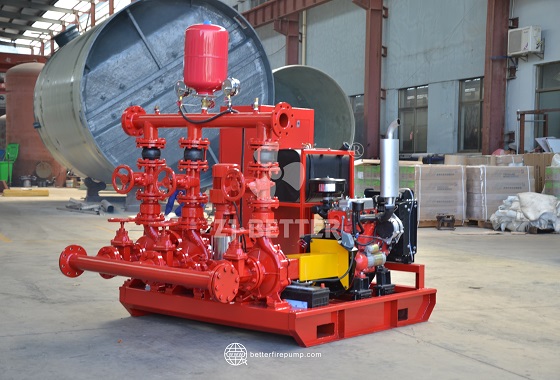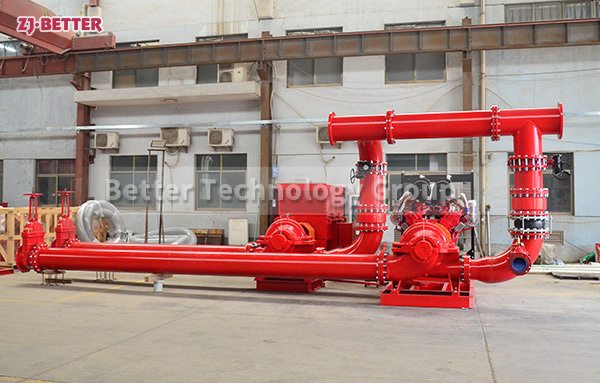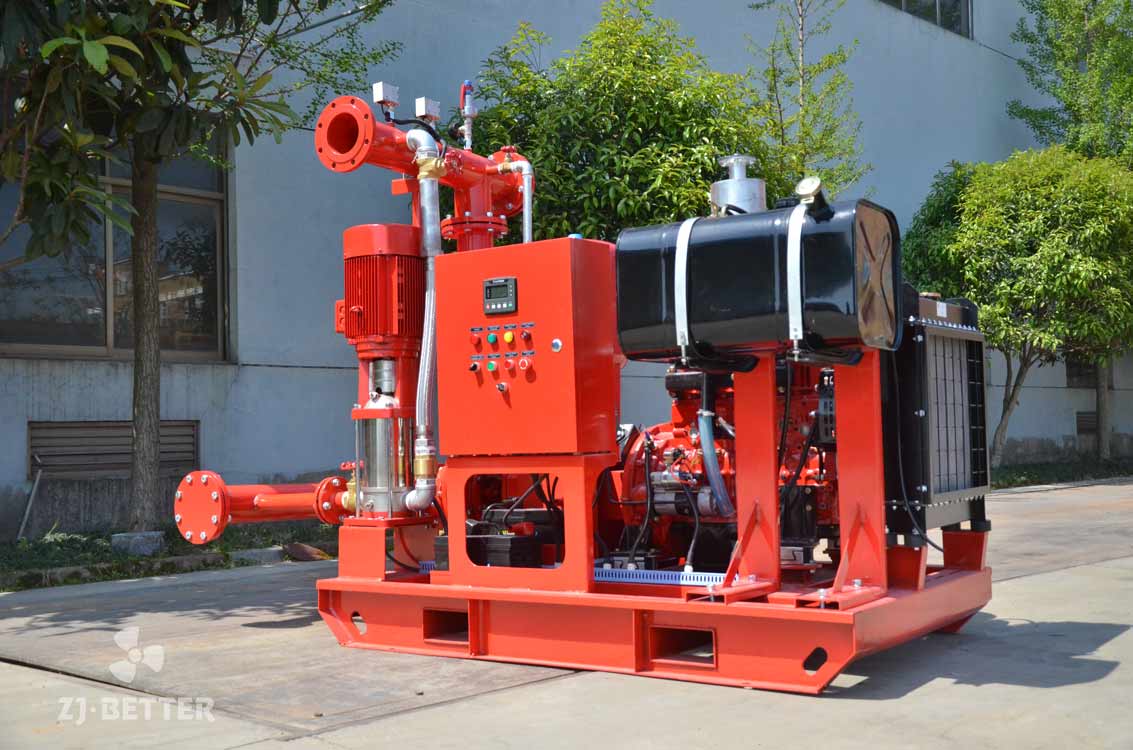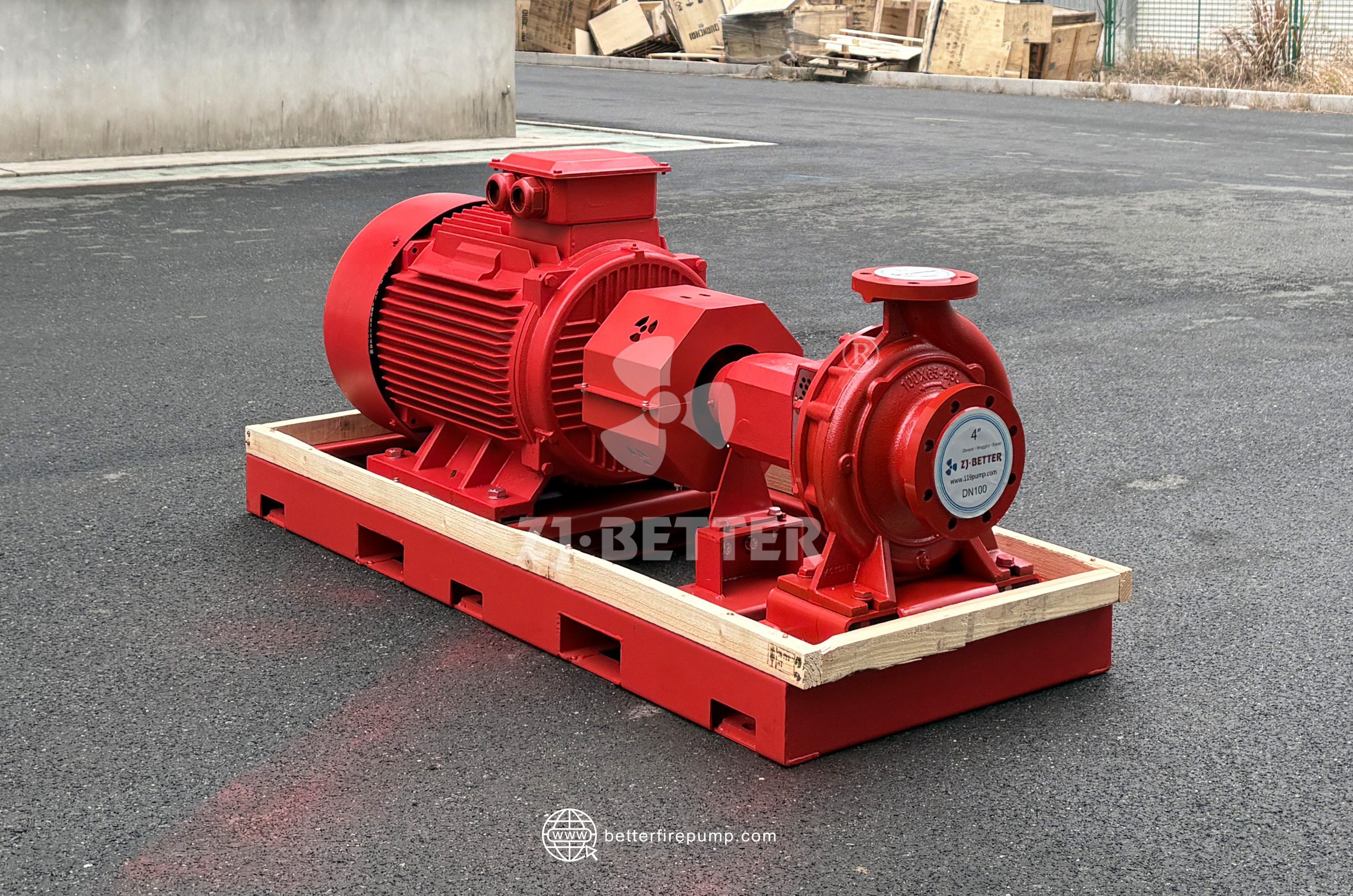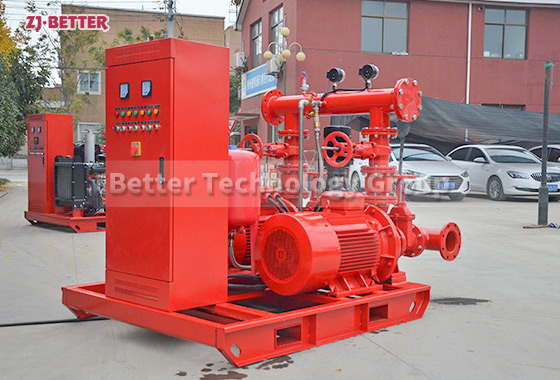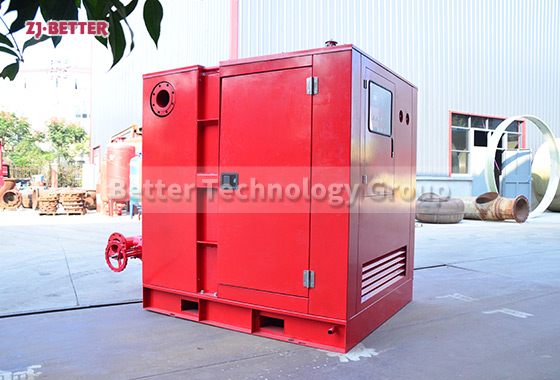ED Pump Set for Efficient Fire Control
Flow: 30-500GPM
Head: 3-20Bar
The ED Dual-Power Fire Pump System combines electric and diesel engine pumps to ensure uninterrupted fire protection and a reliable water supply. In the event of power outages or electrical failures, the diesel engine pump seamlessly takes over, guaranteeing continuous operation of the fire protection system. This dual-power configuration offers both reliability and flexibility, providing comprehensive coverage for fire safety needs.
Types of pumps used for fire service include: End Suction Pump, Split Case Pump, Vertical Inline Pump and Vertical Turbine Pump.
1. Electric motor driven pump, can use single stage pump, horizontal split case pump, end suction pump,multistage pump.
2.Diesel engine pump, with capacity and head equal to electric pump, with fuel tank, water tank, fan,control box.
3. Control panel: Auto Control of electric pump, diesel engine pump and Jockey Pump with overload, overcurrent protection.
Ensure continuous fire protection with the ED Dual-Power Fire Pump System. Combining the reliability of electric and diesel engine pumps, this innovative system guarantees uninterrupted water supply for enhanced safety in critical fire scenarios.

